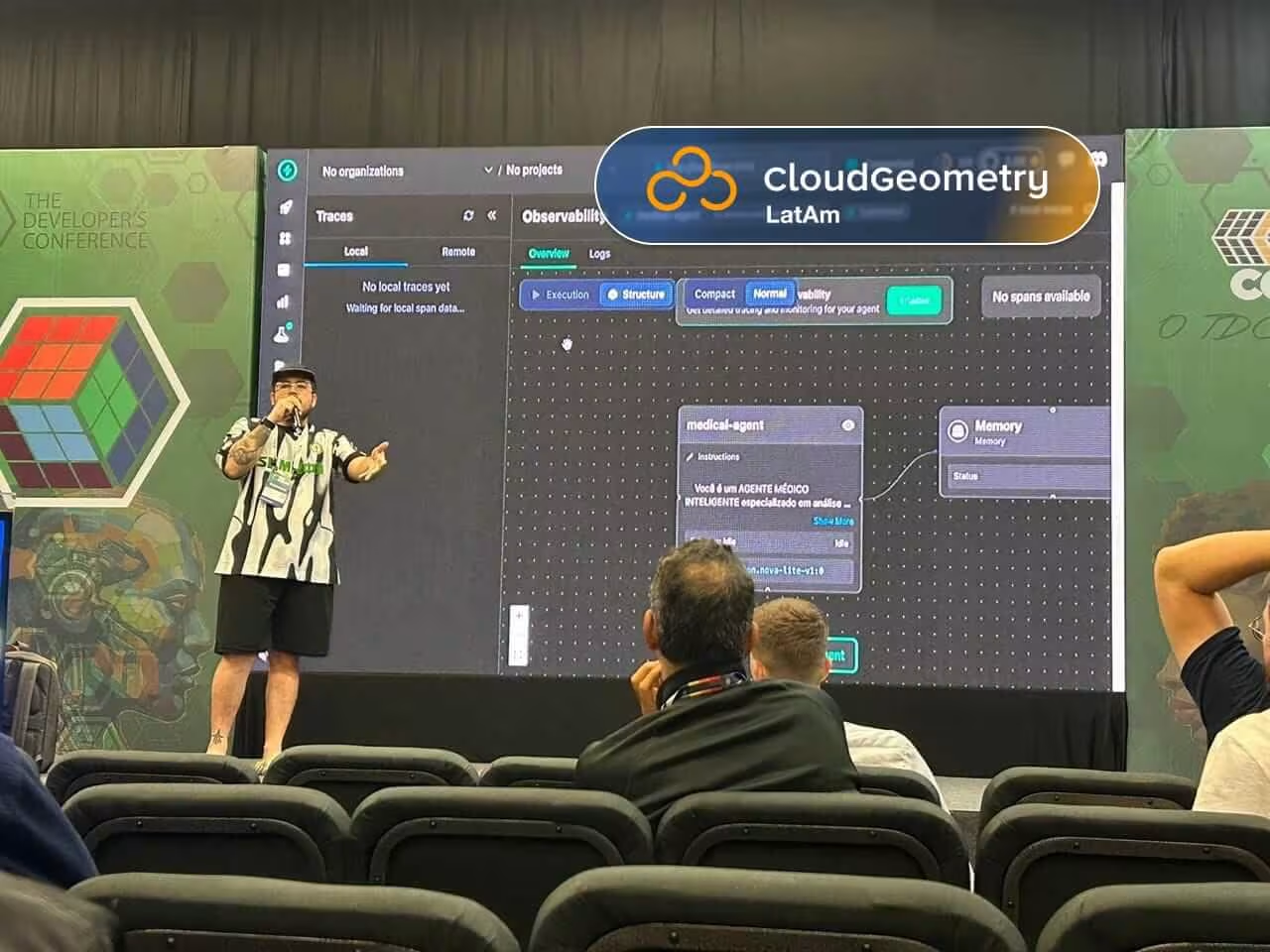At TDC São Paulo 2025, I presented how Agent Event-Driven Architecture (AEDA) is redefining serverless applications. The talk emphasized moving beyond orchestration-heavy microservices toward autonomous, event-driven agents. A live AWS demo using VoltAgent showed fault tolerance, cost savings of 73%, and simplified scaling. The session sparked deep conversations about emergent agent behavior, distributed resilience, and the readiness of developers to adopt this paradigm.
Insights from TDC São Paulo 2025 on Agent Event-Driven Architecture: autonomous agents, event-driven design, AWS demo, resilience, and 73% cost savings over microservices.
Last week at TDC São Paulo 2025, I had the opportunity to share something I'm genuinely excited about: how Agent Event-Driven Architecture is reshaping the way we think about serverless applications. Despite being scheduled as the final talk of the day (when everyone's usually checking their phones and eyeing the exit), the room stayed packed and the energy was incredible.
Why Agents + Events = The Future
The core message I wanted to drive home was simple but powerful: traditional microservices architectures are hitting their limits. As our systems grow more complex, the orchestration overhead becomes crushing. Enter Agent Event-Driven Architecture, where autonomous agents respond to events, make decisions, and trigger actions without centralized control.
Using VoltAgent on AWS, I demonstrated how this approach eliminates the typical bottlenecks:
- No more complex orchestration layers
- Agents that scale independently based on actual demand
- Event streams that provide natural decoupling between services
- Built-in resilience through agent autonomy
The Live Demo
The highlight was showing a real-world implementation running fully serverless on AWS. We built a system where multiple agents collaborated to process customer orders, each handling their domain (inventory, payment, shipping) while communicating through events. When I deliberately killed one agent mid-demo, the audience saw how the system gracefully continued operating, with other agents adapting to the failure.
The "aha" moment came when I showed the cost comparison: 73% lower than traditional microservices for the same workload, with better fault tolerance and simpler code.
The Conversation That Made My Day
After the talk, Marcelo Palladino pulled me aside for an hour-long discussion about agent hypothesis testing and emergent behaviors in distributed systems. His perspective on how agents could self-optimize based on event patterns opened up new directions I hadn't considered. These hallway conversations are why in-person conferences still matter. You can't replicate this kind of spontaneous knowledge exchange on Zoom.
The debate with Luan Pedro and Lago Cardial about monokernels versus microkernels (yes, we went there) reminded me why I love this community. Where else can you jump from cutting-edge serverless patterns to arguing about Linus Torvalds versus Andrew Tanenbaum over drinks?
What's Next
The engagement from the audience convinced me that developers are ready for this shift. The questions weren't about "why" anymore, they were about "how" and "when." That's the signal that a technology is ready for mainstream adoption.
For those who couldn't attend, I'm working on open-sourcing the VoltAgent framework and creating a comprehensive tutorial series. The future of serverless isn't just about running functions in the cloud. It's about intelligent agents that can think, react, and evolve.
Special thanks to Damiana Costa and Danilo Pereira De Luca for organizing such a smooth event, and to everyone who stayed late to engage with these ideas. Your enthusiasm is what makes sharing this work worthwhile.
Follow me on Linkedin to keep up to date with the latest cloud-native & AI developments






